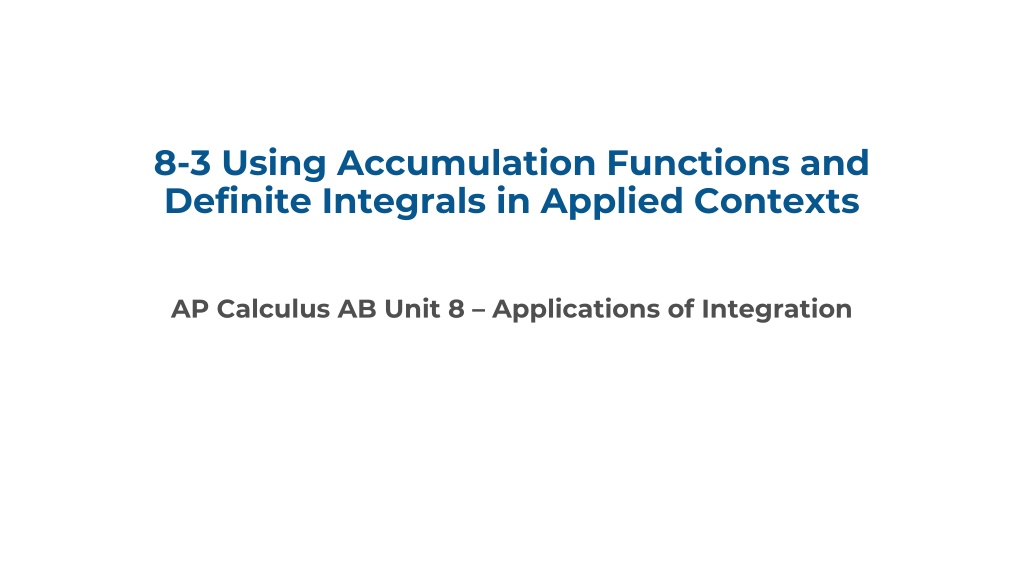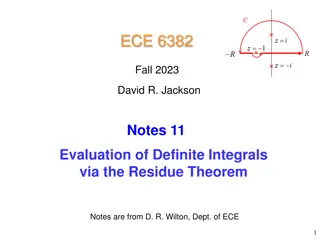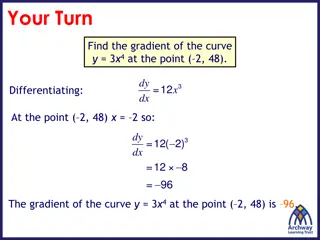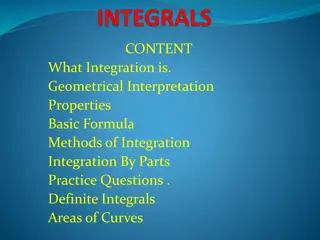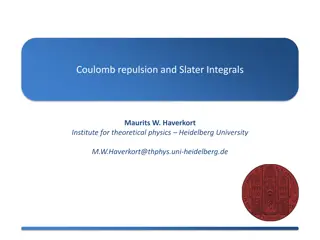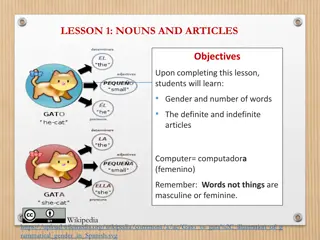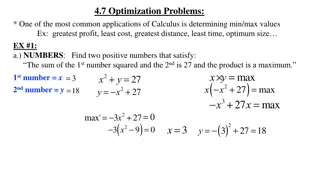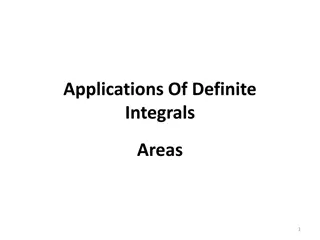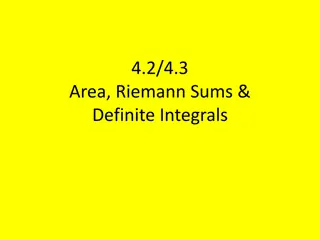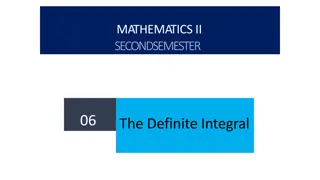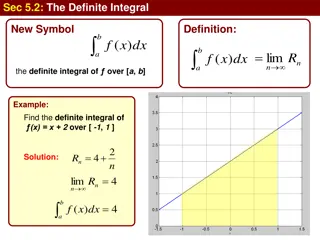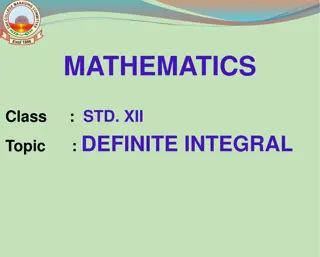Understanding Accumulation Problems and Definite Integrals in Applied Calculus
Explore the interpretation of definite integrals in accumulation problems, where rates of change are accumulated over time. Learn how to solve accumulation problems using definite integrals and avoid common mistakes by understanding when to use initial conditions. Discover the relation between derivatives and integrals in different contexts. Remember the Fundamental Theorem of Calculus and contemplate how accumulation changes when the quantity is decreasing.
Download Presentation

Please find below an Image/Link to download the presentation.
The content on the website is provided AS IS for your information and personal use only. It may not be sold, licensed, or shared on other websites without obtaining consent from the author. Download presentation by click this link. If you encounter any issues during the download, it is possible that the publisher has removed the file from their server.
E N D
Presentation Transcript
8-3 Using Accumulation Functions and Definite Integrals in Applied Contexts AP Calculus AB Unit 8 Applications of Integration
Outcomes Outcomes CHA-4.D Interpret the meaning of a definite integral in accumulation problems. CHA-4.D.1 A function defined as an integral represents an accumulation of a rate of change. CHA-4.D.2 The definite integral of the rate of change of a quantity over an interval gives the net change of that quantity over that interval. CHA-4.E Determine net change using definite integrals in applied contexts. CHA-4.E.1 The definite integral can be used to express information about accumulation and net change in many applied contexts.
Accumulation problems are solved using definite integrals Accumulation (or net change) problems are word problems where the rate of change of a quantity is given and we are asked to calculate the value the quantity accumulated over time. These problems are solved using definite integrals. Example Common mistake: Misusing initial conditions Some accumulation problems ask about a net change, and some ask about an actual value. The difference is that when looking for an actual value we must use the initial conditions. A common mistake would be using initial conditions when asked about a net change, or not using initial conditions when asked about an actual value.
When do we integrate? Derivatives are useful when we are given a quantity and asked about its rate, while integrals are useful when we are given a rate and asked about the quantity.
Remember the Fundamental Theorem of Calculus ? ? ? ? ?? = ? ? ?(?) ? ? ?? = ? ? ?(?) OR ? ? ? ? ? ? = ? ? + ? ? ?? OR ? ? = ? ? + ? ? ?? ? ? How do you think accumulation will change when the quantity is decreasing?
A. 15 B. 38 C. 150 D. 188
